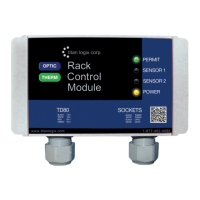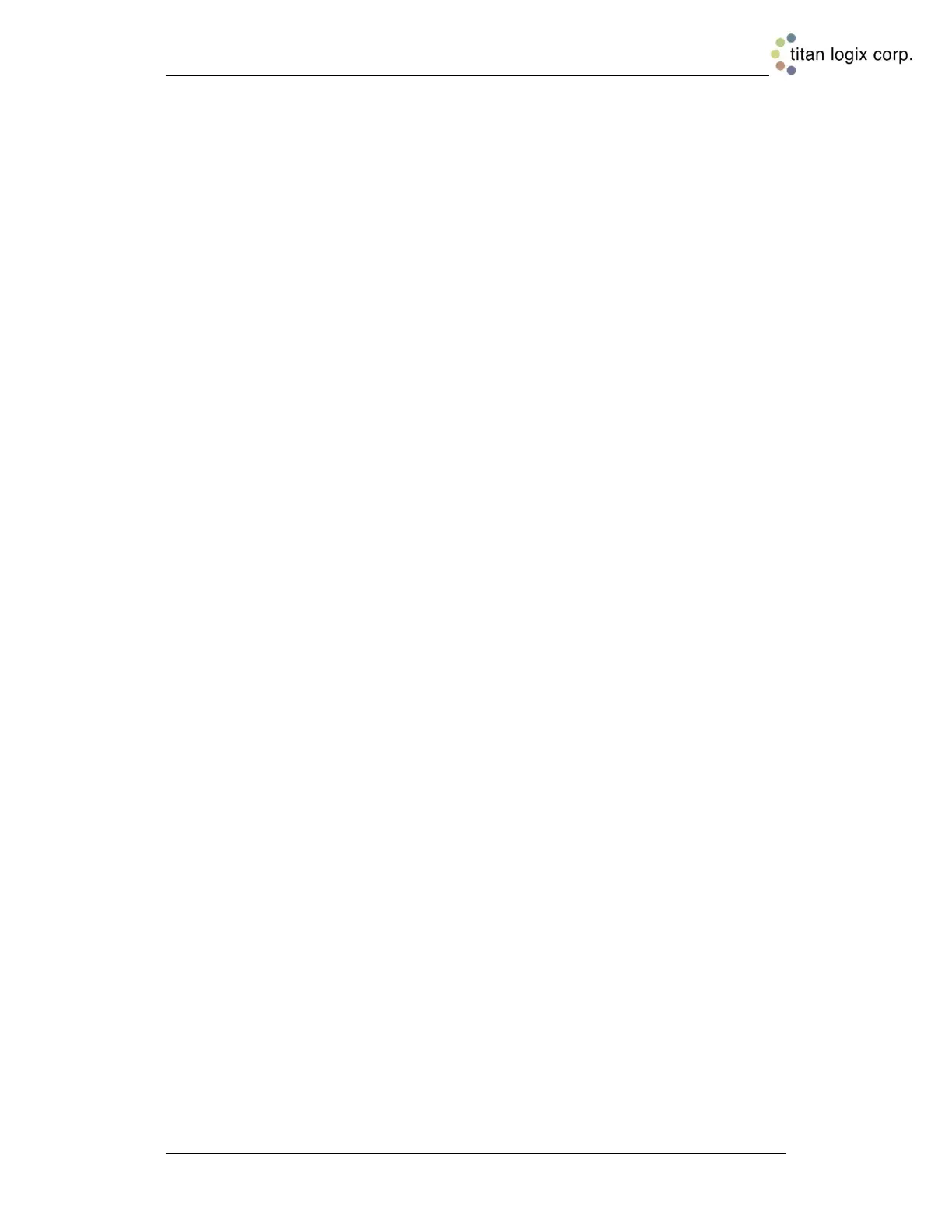TD80™ Level Gauging and Overfill Prevention System Product Manual
Rev. 2, August 4, 2015/ TD80 Programming Page 157
3. Load the programming file created in step 3 if required.
4. Program the second TD80 transmitter.
5. Test the newly programmed transmitter for correct operation.
6.3.6.3 Offset Calibration and Programming Considerations
The TD80 offset calibration is designed to halt compensation if the HH alarm level
exceeds the currently selected Spill alarm level. Continued Finch display button presses
to adjust the calibrated volume measurement above the Spill level are ignored by the
TD80 transmitter. This is a safety measure to ensure that the HH alarm activates before
the Spill alarm when loading. The expected alarm sequence is first Fill alarm, then HH
alarm, followed by Spill alarm.
The HH alarm is set to a predetermined volume and is activated when the measured
level is equal to or exceeds that volume. Offset calibration shifts the strapping table up or
down by 1/16” increments to match the displayed volume with the actual loaded volume.
A specific volume measurement changes position up or down the probe as measured
from the top of the tank. Spill alarm setting is by a fixed distance from the tank top. It is
not affected by offset calibration.
Large offset calibration distances are the result of incorrect programming information.
Errors in compartment height, riser height above the tank and depth chart inaccuracies
contribute to programming that prevents accurate level measurements. Attempts at using
the offset calibration to compensate for the inaccuracy may cause the HH alarm level to
be above the fixed Spill alarm level. This condition is prevented by the TD80.
Inability to accurately calibrate the TD80 is an indication that the programming is
inaccurate. Review all of the programming information, including physical measurements
of the installation. The solution is then to reprogram the TD80 with corrected information
and continue the calibration process.
6.3.6.4 Depth Chart Construction
A depth chart for any compartment may be built using a metered amount of liquid and a
dipstick or measuring tape. The procedure is to start with an empty tank, load slowly
through a flow meter and record the volume loaded at each inch from the bottom to the
top of the tank.
The recorded chart is then entered into Birdfeeder and used to program the TD80
transmitter. Volume at fractional inches is not required. Birdfeeder will calculate the
increments between whole inches.
The TD80 needs to be programmed to report inches if it is already installed and
operating. This is also a method to use for measuring depth of hazardous products such
as jet fuel.
Programming the TD80 as a Dipstick
Birdfeeder is used to create a strapping table to display inches with a resolution of 1/16”.
The TD80 programmed with this table becomes a dipstick for creating the depth chart.

